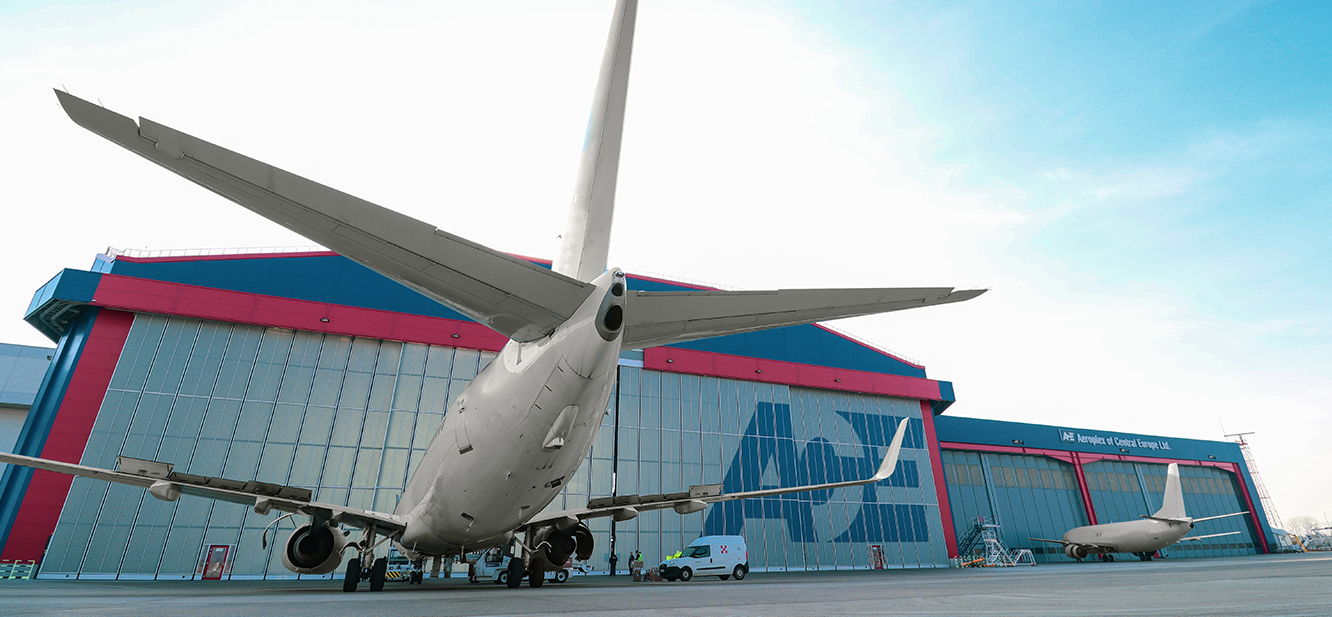After the previous Construction Master Award, the project implemented by Weinberg’93 Ltd., a general contractor, has also been awarded the Construction Award of Excellence. In the light of this new award, we investigated what was needed to achieve a development with special parameters and challenges.
The construction of the aircraft hangar of AEROPLEX Central Europe Ltd. was considered a real engineering feat by the jury that awarded the project the Construction Industry of Excellence Award, according to the laudation announced at the Gala of 7 December 2023. We learned about the challenges of the ACE (Aeroplex of Central Europe) hangar, inaugurated last March at Budapest Airport, with the help of general contractor Weinberg’93 Ltd. The general designer of the project was ARC-S Group Ltd.
Unusual dimensions had to be implemented
Weinberg’93 Ltd., based in Sárospatak, was responsible for both the production and construction of the unique steel structure of the new hangar, which was an own investment of AEROPLEX Central Europe Ltd. The facility, which can be considered unique in Hungary, has already earned national attention during its construction, as it was awarded the Master of Construction Award at the ÉVOSZ Gala in December 2021.
The size of the hangar made it a special challenge: the span and height were not always a challenge.
The more than 8,200 square metre hall, to be built between two existing hangars, had to have a clear span of 90 metres, a 31-metre high ceiling and a 75-metre wide, undivided door opening width on one side.
This has made the hangar suitable for the full servicing and maintenance of 31-metre wide-body aircraft.
The unique steel frame structure required for the above was made by the Weinberg’93 Kft. in Sárospatak. For the factory and on-site assembly, a custom-made assembly tool was made, which allowed to significantly reduce the fitting measurements.
On average 40 people worked on the construction
As indicated in our previous article, the assembly was also achieved with special solutions.
Among other things, the 90-metre wide roof main support structure was lifted completely, one frame at a time, to a height of 30 metres, on top of the previously erected, rigid pillar frames. This required a strong technical background and the close cooperation of highly qualified and experienced professionals. The erection of the structure involved 5 crane hoists, 3-4 cranes and an average of 40 erectors working simultaneously.
In addition to the above, the appreciation of the project at the recent ÉVOSZ Construction Industry Excellence Award gala also says a lot about the project. “The logistics of transporting your steel structures from Sárospatak to the site and the precision with which all the structural elements were put in place was a real engineering feat”, reads the citation.
Installation could only start from one direction
According to Weinberg’93 Ltd., the new building was a big challenge because it was built closely between two existing hangars and is directly connected to the service building. “We were therefore only able to start the steel structure installation from one direction and, as we progressed, the structure was also used to clad the roof and facade,” the report summarised.
In our previous article, we also described how the project involved custom-built material handling systems and alpine engineering. Accordingly, Weinberg, which has always used innovative solutions in other projects, has already placed great emphasis on preparation. “Before the construction work started, the project team was selected in consultation with the company’s management so that colleagues with experience in specialised work would carry out the construction,” they told the paper. “The team planned the installation schedule in advance, agreed on the supplies and selected the cranes and lifting equipment needed for the lifting.”
The principles of LEAN project management were applied
Weinberg’93 Ltd. places great emphasis on continuous improvement, and has started to learn and implement LEAN principles not only in its manufacturing processes, but also in its construction projects. The special requirements of Budapest Airport and the specific environment of the construction site also provided the opportunity to apply the project elements in a special way.
“The airport has special regulations for access and boarding, and the construction site was located in close proximity to the runway, with limited landfill space available. Precise forward planning was a priority, both in terms of staffing and the continuous supply of materials. It was not possible to improvise on the project.”
Sustainability was not left out of this project either
Finally, it was also reported that sustainability, which has always been a priority for Weinberg’93 Ltd. “Glass foam granulate was used to seal the building, packaging materials were collected selectively, and concrete elements covering the area were sent to the airport for recycling.”
Weinberg’93 Ltd. also pointed out that the experience gained in the project can be used at any time in the area of Budapest Airport, which is home to numerous developments.
Photo: Aeroplex

